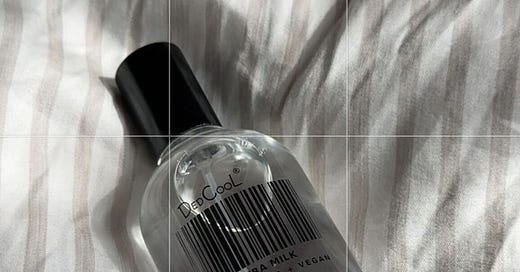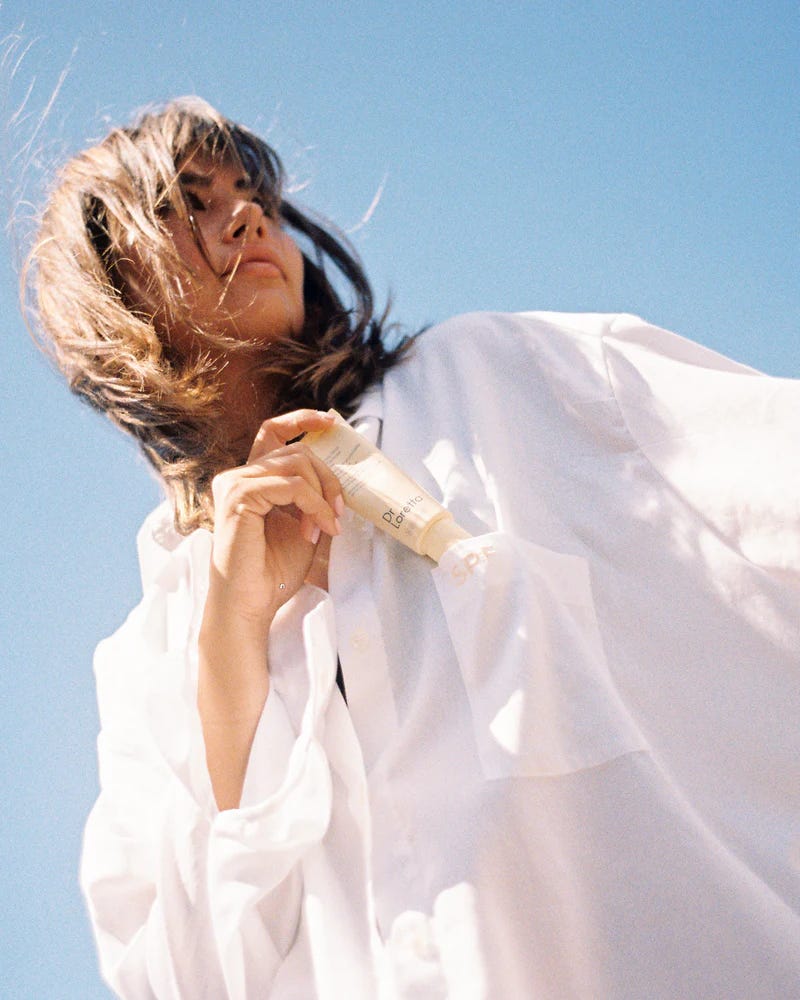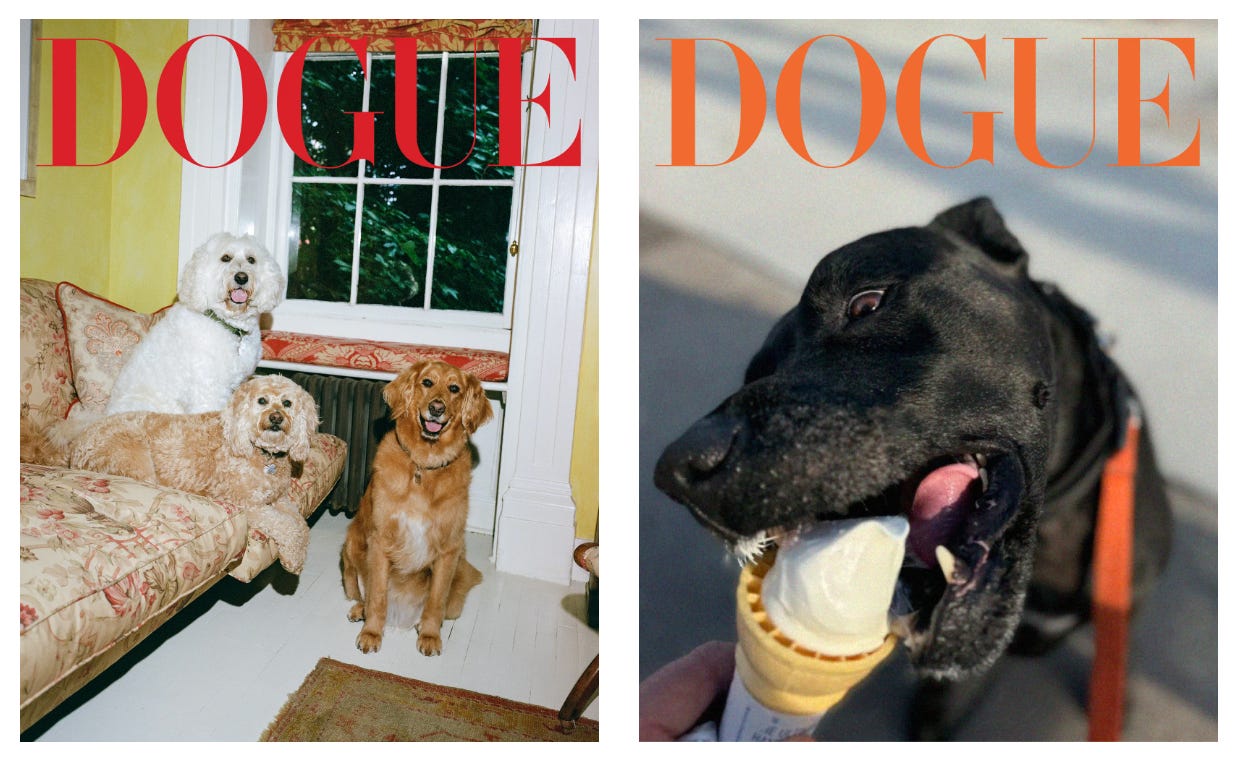In the age of immediacy — devoid of subtlety or even artful, postmodern irony — the beauty industry encourages literal objectification. Consider just a few of the past decade’s dehumanizing ideals: glass skin, glazed donut skin, Barbie arms, Barbie labia. Boring, obvious, effective.
Lately I wonder if our objectification is proven by its inverse — the personification of objects. (Maybe it’s a sense of kinship with Stanley cups that inspires us to dress them in little outfits.)
The thought first crossed my mind in 2022, when actress Courtney Cox launched Homecourt, a line of dish soaps, surface cleaners, and candles. She describes the offerings as “beauty products for the home.” Is it possible that in the transition from selfies (an image of one’s self) to shelfies (an image of one’s cosmetics, pioneered by Into The Gloss), a sort of transference occurred? Is it shelf-identification that makes us believe inanimate storage units deserve serums of their very own?
I had a similar reaction to a recent collaboration from skincare brand Dr. Loretta and clothing brand LESET — a monogrammed shirt, released in June. The design includes a pocket meant to hold a tube of sunscreen; where a person’s initials would normally appear, the letters “SPF” are embroidered.
Personification through beauty peaked earlier this week. First, Dolce & Gabbana introduced Féfé, an “elegant dog perfume.” Then,Vogue published Dogue, a series ofVogue covers featuring dogs in place of models and articles on “editors’ dog essentials” (pearl necklaces, Aesop shampoo) as well as “dog-friendly spa experiences.”
This is all in good fun, of course. I love the Dogue covers! Still, I suspect the industry’s animation of the non-human says something about its in-animation of us…







I would love to hear your thoughts about restock-style beauty videos and personification. I feel like it’s not only personifying the products shown, but sexualizing them. The person filming always has immaculately done nails and used them to “undress” the product by removing packaging, then taps, caresses, rubs, and strokes the product. The focus is solely on the somatic senses the person filming is giving to the product.
I think it ties into the whole “gen z doesn’t have sex”. Instead a sexual outlet is engaging with products in this fetishized, sexual way. Especially since the person filming is in POV of the viewer, doesn’t show more than hands, and usually doesn’t speak, allowed for it to feel more like a 1:1 tryst with the product, not a video.
Sorry if this isn’t an original idea and I need to credit someone!
This is so interesting (and scary lol). Like commodifying the (female) body isn't enough...we need to imbue the objects we consume with the personhood we deny the actual living person?